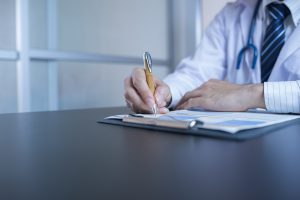Nearsightedness Demystified Nearsightedness, medically known as myopia, is a prevalent vision condition characterized by clear vision for nearby objects but blurriness when it comes to those at a distance. The root cause lies in the eye’s shape, leading to inaccurate light refraction. Decoding Symptoms Identifying myopia involves recognizing key symptoms: Blurry Vision: Especially noticeable for
Nearsightedness Demystified
Nearsightedness, medically known as myopia, is a prevalent vision condition characterized by clear vision for nearby objects but blurriness when it comes to those at a distance. The root cause lies in the eye’s shape, leading to inaccurate light refraction.
Decoding Symptoms
Identifying myopia involves recognizing key symptoms:
- Blurry Vision: Especially noticeable for distant objects.
- Squinting or Partial Eye Closure: Efforts to enhance clarity.
- Headaches and Eyestrain: Common discomfort associated with myopia.
-
Image by: yendex.com
Early Signs in Children
Children may exhibit subtler signs of myopia, such as:
- Persistent Squinting: A telltale sign of visual struggle.
- Excessive Blinking: A reflex to cope with unclear vision.
- Proximity to Screens: Sitting unusually close to TVs or devices.
Seeking Timely Medical Attention
Prompt action is crucial for effective management. Schedule an appointment:
- If your child displays signs of vision issues.
- If you notice changes in your own vision.
- Emergency Care: For sudden floaters, flashes of light, or a curtain-like shadow in your field of vision – warning signs of retinal detachment.

Image by: yendex.com
The Imperative of Regular Eye Exams
Regular eye exams are a cornerstone of eye health, ensuring timely detection and intervention. Screening recommendations vary by age:
Comparative Table: Recommended Vision Screenings
| Age Group | Frequency |
|---|---|
| 3-5 years | At least once |
| 5-6 years (before kindergarten) | Before starting school |
| High school years | Annually |
| Adults | Varied frequency based on age |

Image by: yendex.com
Understanding the Causes
Myopia, being a refractive error, occurs when the eye’s shape hinders accurate light refraction. Factors contributing to nearsightedness include:
- Eye Shape: Often elongated or oval, causing light to focus in front of the retina.
- Cornea Curvature: Excessive steepness can also contribute to myopia.

Image by: yendex.com
Unraveling Risk Factors
Several risk factors heighten the likelihood of developing myopia:
- Genetics: A familial predisposition, especially if both parents are nearsighted.
- Close-up Activities: Prolonged reading or engaging in other close-up tasks.
- Screen Time: Studies indicate a correlation between excessive screen use and myopia.
- Environmental Conditions: Limited outdoor time potentially increases the risk.
Potential Complications of Nearsightedness
Myopia can lead to various complications, ranging from mild to severe:
- Academic Challenges: Children with myopia may experience delays in reading and academic skills.
- Reduced Quality of Life: Daily tasks and activities may be compromised without correction.
- Eyestrain and Headaches: Persistent discomfort without corrective measures.
- Safety Risks: Impaired vision poses dangers, especially during activities like driving or operating heavy machinery.
- Other Eye Problems: Severe myopia elevates the risk of serious eye conditions such as retinal detachment, glaucoma, and cataracts. Treatment for other health Problems

Image by: yendex.com
Conclusion
In conclusion, myopia demands our attention and proactive management. Regular eye exams, starting in childhood and continuing through adulthood, are pivotal for preserving good vision and overall eye health. By understanding the intricacies of myopia, we empower ourselves to navigate its challenges effectively.

















